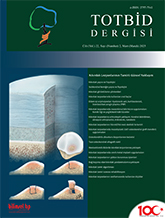
Articular cartilage is a tissue that still has problems in its treatment due to its limited healing capacity. It is an indisputable issue that if articular cartilage injuries are not treated, they can lead to osteoarthritis in the future. Basically, cartilage lesions can be classified as partial and full-thickness cartilage lesions. Although the majority of osteochondral lesions are asymptomatic, pain in the joint space may present with tenderness, effusion, pain increasing with activity, and mechanical symptoms. Today, many treatment algorithms have been mentioned in the literature on articular cartilage injuries. However, no matter how the cartilage is treated, the cartilage formed is intended to be hyaline cartilage. Because long-term problems arise in the case of recovery with Fibrocartilage. This pushes researchers to search for new treatments that will enable the development of hyaline cartilage. The aim of the treatment of cartilage lesions today is to prevent the degenerative process that will develop in the future, to ensure the restoration of the joint surface, to relieve the patient`s complaints, and to treat additional injuries such as meniscus tear that can be observed together with the cartilage lesion, apart from obtaining hyaline cartilage. Although there are many treatment options in the treatment of cartilage lesion, when evaluating a patient, not only the cartilage lesion, but also all the characteristics of each patient should be evaluated.